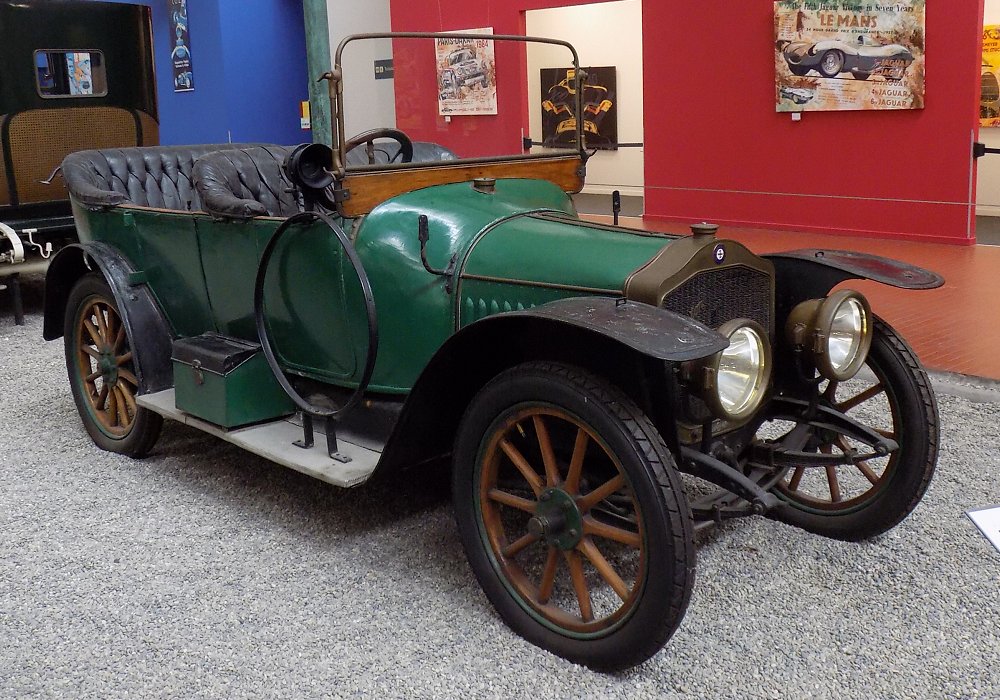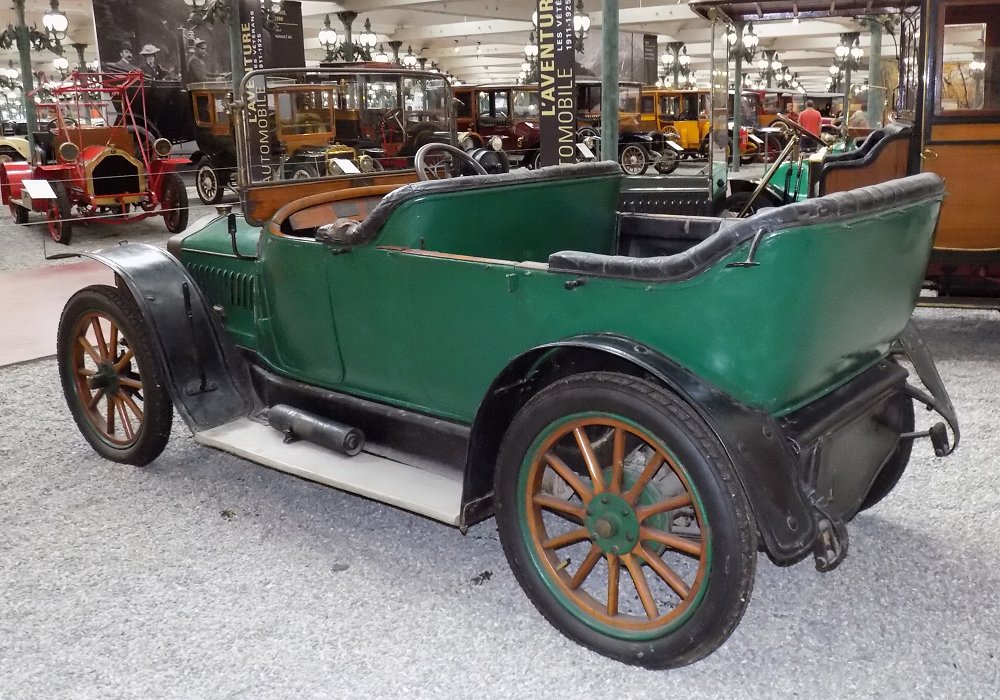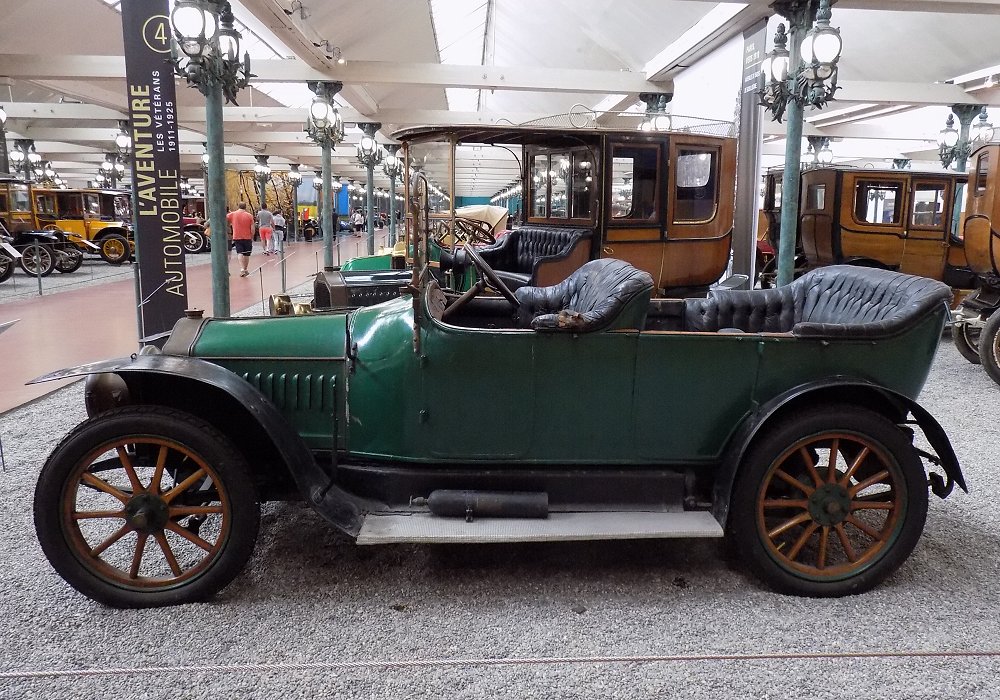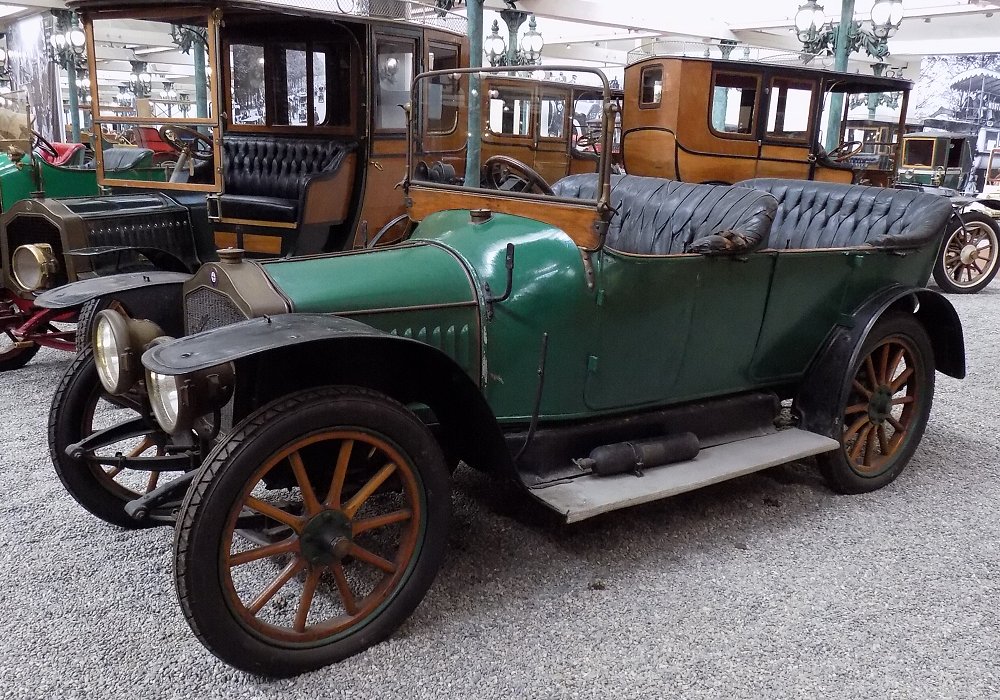Description
The De Dion-Bouton Type DX Torpedo was a touring automobile produced in the early 1920s, at a time when De Dion-Bouton was focusing on mid-range vehicles that combined dependable engineering with fashionable open-body styling. The “Torpedo” designation referred to a particular style of open car body that was sleek and tapered, with a rounded rear and minimal roof structure, giving it a sporting and aerodynamic appearance for its era.
Under the bonnet, the Type DX was equipped with a four-cylinder petrol engine, likely displacing around 2.5 to 3.0 litres. This engine produced between 12 and 16 horsepower, aligning with the vehicle’s role as a medium-powered touring car rather than a performance machine. The engine was front-mounted and used a side-valve configuration, which was typical for the time. Ignition was managed via a magneto system, and cooling was by water circulation through a front-mounted radiator.
Power was transmitted to the rear wheels through a manual gearbox, probably offering three or four speeds. De Dion-Bouton had, by this time, fully adopted shaft drive in place of its earlier chain systems, so the DX benefited from smoother and more reliable power delivery. The clutch was mechanically actuated, and the gear lever was usually mounted on the right-hand side of the driver or centrally between the seats, depending on market and coachbuilder preferences.
The chassis was constructed from pressed steel, offering strength and rigidity while remaining relatively lightweight. The Torpedo body style featured an open-top design with a long, low silhouette, flowing fenders, and a tapering tail section. Seating was typically arranged in two rows, accommodating four passengers, though variations existed depending on the coachbuilder. The windshield was upright and often foldable, and a folding canvas top could be raised in poor weather.
The Type DX rode on semi-elliptic leaf springs front and rear, with rigid axles. Braking was mechanical and usually applied only to the rear wheels, a common configuration for the time. Some models may have had a transmission brake to assist with deceleration. The wheels were either wooden artillery types or steel disc wheels, and tyres were narrow, high-pressure types suited for the uneven road surfaces of the day.
The dashboard was minimal, featuring a speedometer, oil pressure indicator, and occasionally an ammeter or fuel gauge. Interior trim was modest, with leather or leatherette seats and simple metal or wooden controls. Though not luxurious, the Type DX Torpedo offered a balance of style and utility that appealed to middle-class motorists who wanted the appearance of a sporty, modern car without the complexity or cost of a high-performance model.
The De Dion-Bouton Type DX Torpedo represents the marque’s effort to remain relevant in the rapidly changing post-World War I automotive landscape. Though the company would eventually struggle to compete with larger manufacturers, models like the DX demonstrated that De Dion-Bouton continued to produce attractive and mechanically sound vehicles into the 1920s. Surviving examples are rare today but are valued by collectors for their period styling, accessible engineering, and connection to one of the earliest and most influential names in automotive history.



